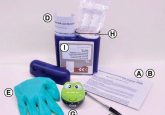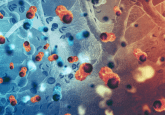High-dose, high reward? New potential treatment for prostate cancer

A Phase II clinical trial has demonstrated the efficacy of targeted, high-dose radiation for the treatment of oligometastatic prostate cancer (OMPC).
The results from the ORIOLE trial were announced at the 61st Annual Meeting of the American Society for Radiation Oncology (15–18 September 2019, IL, USA). The trial focused on treatment for men suffering from OMPC.
Oligometastatic disease is a type of metastasis usually defined by the spread from a primary tumor to fewer than five metastatic sites. Previous studies have demonstrated that high-dose radiation is an appropriate treatment for patients with localized or non-metastatic prostate cancer. However, there are few studies demonstrating the efficacy of the treatment for OMPC.
“This is the first bit of evidence that I’m aware of showing that SABR can induce a systemic immune response in patients with prostate cancer.”
The ORIOLE trial randomized 54 patients with OMPC. The patients were split into two cohorts; one group was observed but received no further treatment. The other group received stereotactic ablative radiotherapy (SABR) to treat their metastatic lesions. SABR is a highly precise cancer treatment, which delivers high doses of radiation to tumors in fewer treatment sessions.
After 6 months only 19% of patients treated with SABR experienced disease progression, compared with 61% of the observed-only group. Men who received SABR treatment were also less likely to have increased prostate-specific antigen levels and lived longer. The median progression-free survival was 5.8 months in the observed-only group; after 1 year more than half of the SABR-treated patients had experienced no progression.
Researchers conducting the trial also examined immune cell levels prior to therapy and 90 days after. Significant changes were observed in the levels of T cells in patients who received SABR, indicating that the high-dose radiation therapy may initiate an immune response, causing immune cells to attack cancer cells.
- Boosting natural killer cells could help fight cancer
- Vest of interest for personalized radionucleotide therapy
- Bill Haney on ‘Breakthrough’ – the Jim Allison documentary
“This is the first bit of evidence that I’m aware of showing that SABR can induce a systemic immune response in patients with prostate cancer,” explained principal investigator Phuoc Tran (Johns Hopkins Kimmel Cancer Center, MD, USA). “Cancer of the prostate is a tumor that does not typically incite a response from the immune system, so seeing this response is exciting.”
The research team also utilized prostate-specific membrane antigen (PSMA) PET scans as well as traditional imaging techniques to image the lesions of patients who received SABR. PSMA PET scans allow the detection of usually unobservable tumor growth by distinguishing proteins that are overexpressed in prostate cancer.
The PSMA PET scans demonstrated that patients who had no additional lesions 180 days after treatment were significantly less likely to develop new lesions after 6 months. Patients with no additional lesions also had a 4.8-times greater progression-free survival than those whose scans had detected at least one lesion.
The trial also utilized a liquid biopsy to analyze circulating tumor DNA. By evaluating circulating tumor DNA, the team was able to identify a specific mutation that could be used to predict which patients would potentially respond to SABR.





